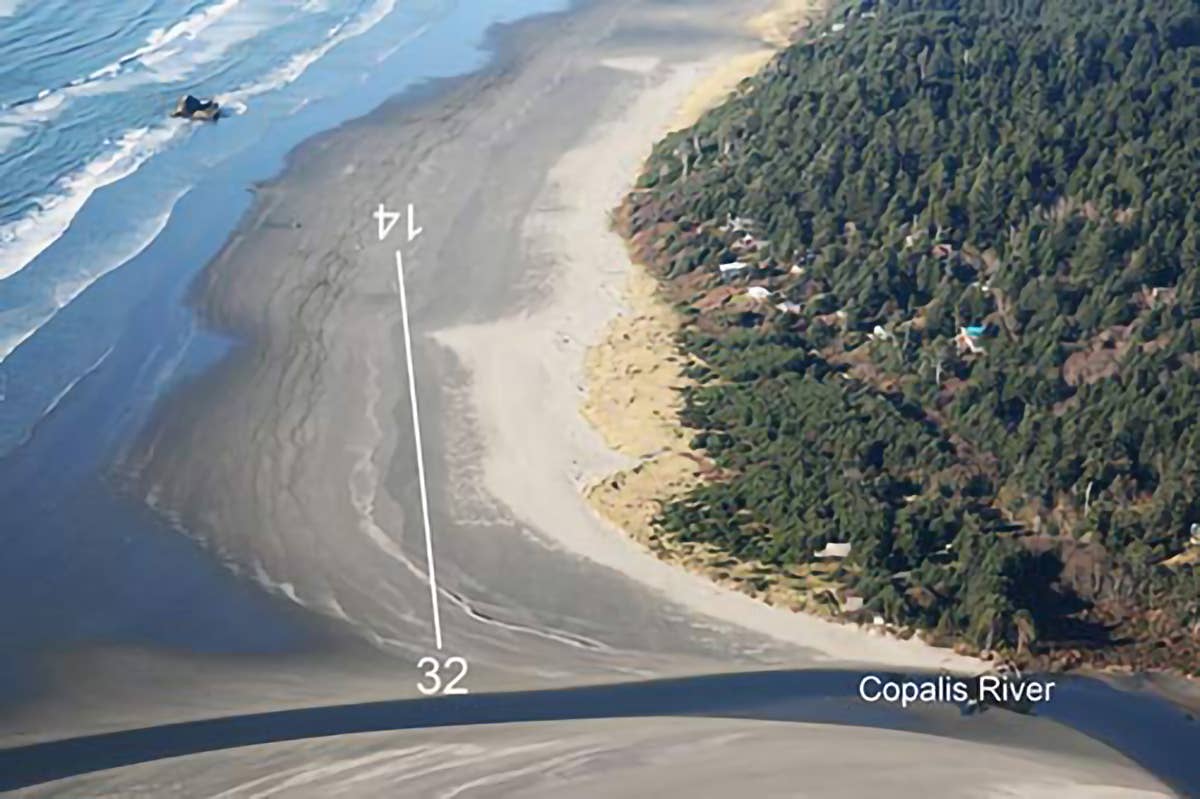There’s a Whale on the Runway at a Seaside Pacific Northwest Airport
A deceased whale has washed up on shore in close proximity to the stretch of sand used as a runway at Copalis Beach (S16) in Washington.

Copalis Beach Airport (S16) is located 15 miles north of Bowerman Airport (KHQM) in Washington state. [Courtesy: Washington State Department of Transportation – CC BY-NC-ND 2.0 DEED]
Pilots who intend to head to Copalis Beach (S16) in Washington state might want to reconsider, as a deceased whale has washed up on shore in close proximity to the stretch of sand used as a runway.
According to the Washington State Department of Transportation Aviation division, the deceased cetacean is a fin whale. According to whalefacts.org, the fin whale is a baleen whale that can grow up to 90 feet long and weigh up to 130 tons, making them the second largest whale in existence after the blue whale.
Washington DOT has issued a warning to pilots about the whale on the runway, noting, "We're asking pilots flying into the airport over the holidays to use extra caution as officials will be working to determine the cause of death of the whale, while other pedestrians and beachgoers could be in the area."
Copalis Beach Airport is located 15 miles north of Bowerman Airport (KHQM), in Hoquiam. Copalis is one of the airports the state manages, and the only beach airport in its system where aircraft are allowed to land legally.
State wildlife officials add that at this time, they will be allowing the whale to decompose naturally and the tides to take its remains out to sea again. According to the state, "The airport access may be temporarily restricted if the tide moves the carcass and blocks the beach landing area."
The fin whale is a brownish gray with a white underbelly and usually travels alone rather than in pods like the orca whales, which are more frequently spotted in the waters of the Pacific Northwest. It is not uncommon for deceased whales to wash up on beaches in the Pacific Northwest.
Removal of the whales from the beach has been treated with caution ever since the state of Oregon highway division used dynamite to remove the carcass of a 45-foot sperm whale that washed ashore near Florence. The idea was that the whale carcass would be destroyed and the remains would land in the sea.
Portland television station KATU was on scene for the event and captured the moment on November 12, 1970, when the eight-ton whale was blown to bits. Reporter Paul Linnman and cameraman Doug Brazil on the beach shooting on 16 mm film were a quarter of a mile from the whale at the time of the explosion. Linnman noted that when the pieces of blubber began landing around them, they realized they were too close and started to run.
"We were running away when we heard a second tremendous explosion in front of us. A piece of blubber the size of a coffee table hit the top of an Oldsmobile and completely flattened the roof," Linnman wrote of the event that day.
The event went viral even before the invention of the internet. In the 1980s and 1990s, the filmed event was transferred to videotape and became part of the holiday blooper reel shown at television stations in the Pacific Northwest.

Subscribe to Our Newsletter
Get the latest FLYING stories delivered directly to your inbox






